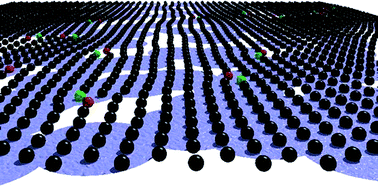Disorder-induced vs temperature-induced melting of two-dimensional colloidal crystals
Abstract
We present molecular-dynamics simulations of a two-dimensional colloidal system interacting with a disordered substrate. Evidence is provided that at zero temperature the system can show an order → disorder phase transition. It is signalled by a switch from an algebraic to an exponential decay of translational order. Being the same switch that also indicates temperature-induced melting, one may consider this a disorder–induced melting transition—even though the word “melting” seems to be in conflict with the fact that the temperature is zero. We have performed simulations with pinning disorder at zero temperature and without such disorder, but at finite temperature. This permits us to make a detailed comparison between temperature-induced and disorder-induced melting. We show that there are differences in the microscopic mechanism leading to the phase transition: while temperature leads to melting by inducing an unbinding of dislocation pairs that are formed already in the ordered phase, pinning disorder can cause melting by inducing so much strain that a distribution of single dislocations are suddenly required to efficiently relieve this strain.


 Please wait while we load your content...
Please wait while we load your content...